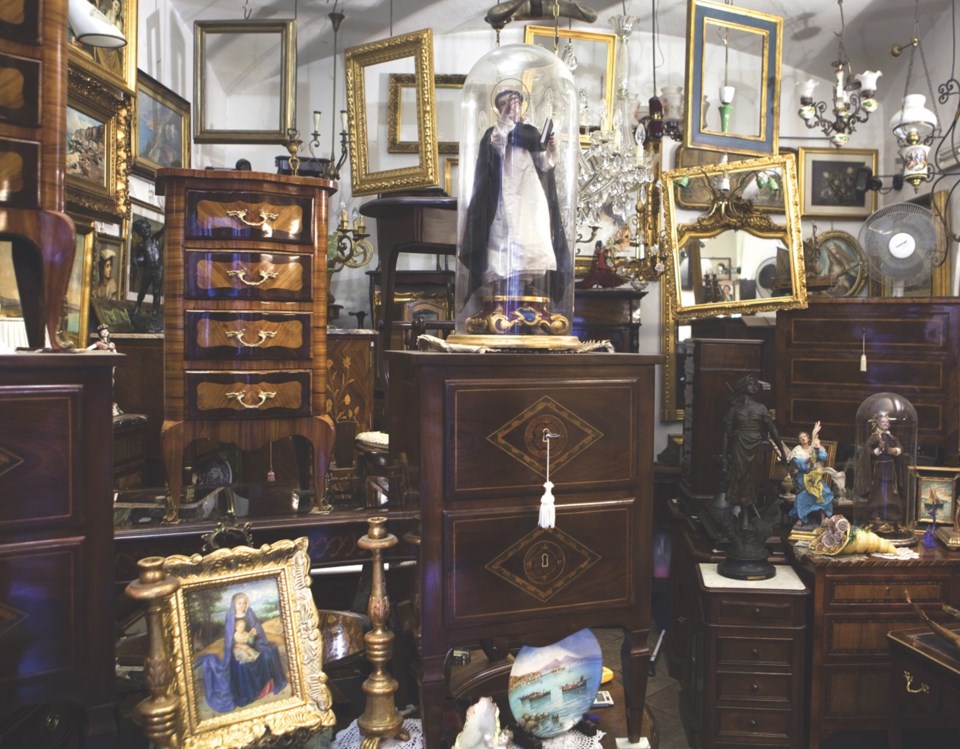Perhaps there are a few readers of this column who, like the author, have a few old pieces of furniture, or odd collectibles sitting around the house.
Some of us keep things simply because we are too preoccupied with more important things in life to clean house. Others of us though, keep things purposefully, vowing, "One day, that’ll be worth something.”
The sad truth for those who love items from the past is that most of it will never be worth anything to anyone. Now, as any episode of Antiques Roadshow will tell you, there are many remarkable exceptions to this, but the vast majority of old stuff is just that--old stuff.
So how do you know if your old stuff is good stuff?
As someone who has dabbled in dealing antiques, here’s a few tips for the uninitiated:
1. Start with the condition.
It doesn’t matter how old something is if it is in disrepair. The best antiques are all in collectible condition--rare is good too, but mint condition is better. Comic books are a great example: It’s no good having a copy of Spiderman No. 1 if it’s badly water-damaged, but this rule applies to all antiques.
2. What’s it made of?
This is a vital step in determining if your antique is truly collectible. Something only a few years old that’s made of a rare material can still be valuable. When you’re considering how much anything you collect is worth, find out exactly what it’s made of. It would be good to know if that coffee table collecting dust in the corner is made of Brazilian rosewood--It’s nearly extinct and very expensive.
3. How old is it?
Knowing how old something is can tell you a lot about its value, but pedigree is an equally important factor when one takes an item’s age into consideration. A fifty-year-old Montblanc is a nice pen that will earn you a few dollars from the right buyer. But a fifty-year-old Montblanc that was used by a celebrity to sign their last record deal? Now you’re talking serious cash. Where you can, always note age, brand name or maker, and who (if anyone) of importance may have owned or been involved with your piece in some way. This is all information you can note to your insurance provider or prospective buyers.
4. Demand.
This is sometimes hard to gauge, but because of the age-old principle of supply and demand, what may be a prized collector’s item in your home that holds a priceless value to you could be worth nothing if the market is cold. Royal Doulton figurines are a good example of this. Once a staple of many homes, and (still) very expensive to buy, one would think any of these figurines that are antique would fetch a good price. Unfortunately, demand for these figurines is very low in today’s market, and unless you’re selling to a dedicated collector who assigns exceptional value to anything Royal Doulton, you might be out of luck. (The exception to this would be rarity.)
5. Placement.
Finally, your antiques could be in great shape--they could even be as old as the hills and signed by Queen Victoria herself--but if you’re listing them in the wrong place, you could get nothing for them. The best of the best should be taken to auction. Barring that, estate sales where you or someone else has hired an appraiser are usually the best bet, but for niche items, Ebay is a good spot. Ebay is great because it links sellers up with buyers from around the world. So, if Dean Martin LPs happen to be a real hot commodity in Switzerland one year, you can get a decent price for one on Ebay rather than selling it for a dollar at a yard sale in your neighbourhood.
Danny Randell writes about history and the vintage lifestyle.



